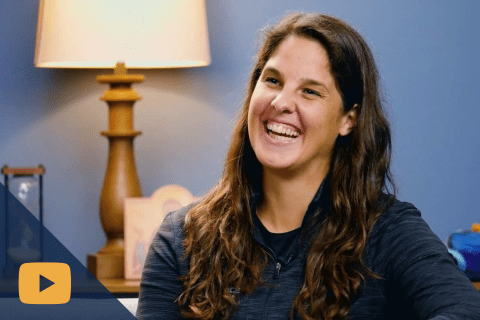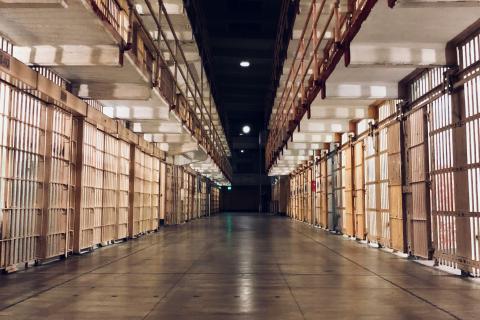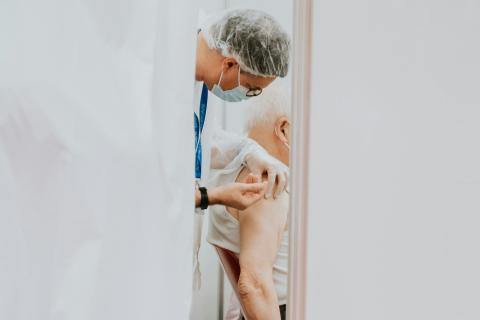
In an August 2019 interview at the Notre Dame Club of Washington, DC, Judge Amy Coney Barrett (eventual Associate Justice of the Supreme Court of the United States) highlighted the main reason she chose to attend not only law school, but to pursue a law degree at a Catholic university: “When I decided to go to law school, I really wanted to choose a place where I felt like I was not going to be just educated as a lawyer, but I wanted to be in a place where I felt like I would be developed and inspired as a whole person.” One would be hard-pressed to find a better description of the ultimate goal of Catholic education: the formation of the whole person.
During the end of my five-year tenure as chaplain of St. Mary’s Central High School in Bismarck, ND, I had the honor of working with the school’s administration in further developing their ability to explain the school’s vision and mission to students, parents, and stakeholders. As often happens, our school mission had become a mere overlooked placard at the entrance of each classroom: “The mission of St. Mary’s Central High School is to provide an opportunity for its community to grow spiritually, academically and socially in a Christ-centered environment based on Catholic tradition.”
When our work eventually arrived at the mission statement – which I found to be a bit underwhelming at first glance – my first impulse was that we should scrap it and start over entirely. A moment later, however, I noticed a crucial pattern – it was truly holistic, touching on the spiritual, academic, and social. Rather than starting over, we used these three components of our mission statement to explain and develop how we seek not only to form our students in one specific area, but as complete human persons. Allow me to share how we deliberately laid out each of these aspects of a holistic Catholic Secondary education – spiritually, intellectually, and socially.
Spiritually: Encountering Christ
In drawing out distinctions between a private Catholic school and a public school, the tendency for many is to oversimplify the matter by explaining that while religion class is offered (and usually required) at Catholic schools, no such classes are found at public schools. While this is true, it misses the entire point. A secondary Catholic school is not merely a public school with a religion class, or a chaplain, or a chapel, or uniforms, or crucifixes and religious art – there is something far deeper in play. First and foremost, a secondary Catholic school is a place where a student is offered countless opportunities to encounter the risen Christ. This reality, far from being constrained to a single class period, is the foundation of everything the school does. We explained this reality in our Mission and Identity statement in the following way:
Intellectually: Pursuing Truth
Just as it is common to reduce a secondary Catholic school to “a school with a religion class,” it is also common to forget (or simply not know) the central importance of interdisciplinary education to the school’s formative mission. As math and science intersect in a variety of obvious ways, so too does the Catholic faith with every discipline taught in a secondary school, whether it be science or literature, art or history. In every classroom, the pursuit of truth is an ultimate priority. We eventually offered the following as our explanation of this pillar of formation:
Socially: Awakening Hearts
For any teacher or parent of high school students, one hardly needs to be reminded that the human person is in fact a “social being.” Yet, we so easily forget that the social dimension of the human person is an integral and purposeful component of our existence. Whether it is a student’s relationship with God or with their teachers, classmates, of friends, a holistically integrated Catholic education focuses on the importance of developing authentic and healthy relationships. Such relationships are necessary for them to live happy, healthy, and holy lives. With this reality in mind, “awakening hearts” became a key phrase in our descriptions of the social dimension of Catholic education. It has been my experience that a student’s heart that has been truly “awakened” demonstrates a kind of existence and love for life that is hard to put into words. A truly “awakened” heart approaches all aspects of life with greater appreciation, determination, and purpose. As we explained:
The Catholic educator is entrusted with the task of making a lasting difference and impact on the lives of their students. Such a task cannot be constrained to a single classroom on campus or a single period in the curriculum, as the noble mission of Catholic education is the formation of the entire person.
I have seen nearly five hundred students receive their diploma from the high school I was blessed to be a part of as a young, newly-ordained priest. While these students have enrolled in colleges and universities near and far, entered the workforce, or served our country in the military, I often have the chance to see them on visits back to their alma mater over long holiday breaks. Although I cannot say that all return to share stories of thriving and flourishing in their new real-world adventures, many do. What is the difference between those who are now thriving and flourishing, and those who are not? Part of the complex answer can be found in the reason any family, parent, or student chooses to commit to a Catholic secondary education. Yes, it is true that many attend Catholic schools because doing so is a family tradition. Yes, it is also true that many attend Catholic schools as a kind of preparatory school in the hopes of attending a prestigious university. These reasons, however, fall desperately short of the entire mission of a Catholic secondary education. Those students who benefit the most from the offerings of a Catholic education – and who are found to be thriving and flourishing years after graduation – seem to be those who most sincerely appreciate and humbly receive a truly holistic Catholic education, spiritual, intellectual, and socially. This places demands on both the school, which must offer a holistic program of formation, and the student (and their families), who must willingly enter into the program. When both school and student live out these noble demands, we witness Catholic education at its best, providing a holistic education and formation for the whole of life. With such formation, students begin to acquire a vision of life that prepares them to serve the Kingdom and our society in whatever capacity they are ultimately called – perhaps even on the bench of the United States Supreme Court.


